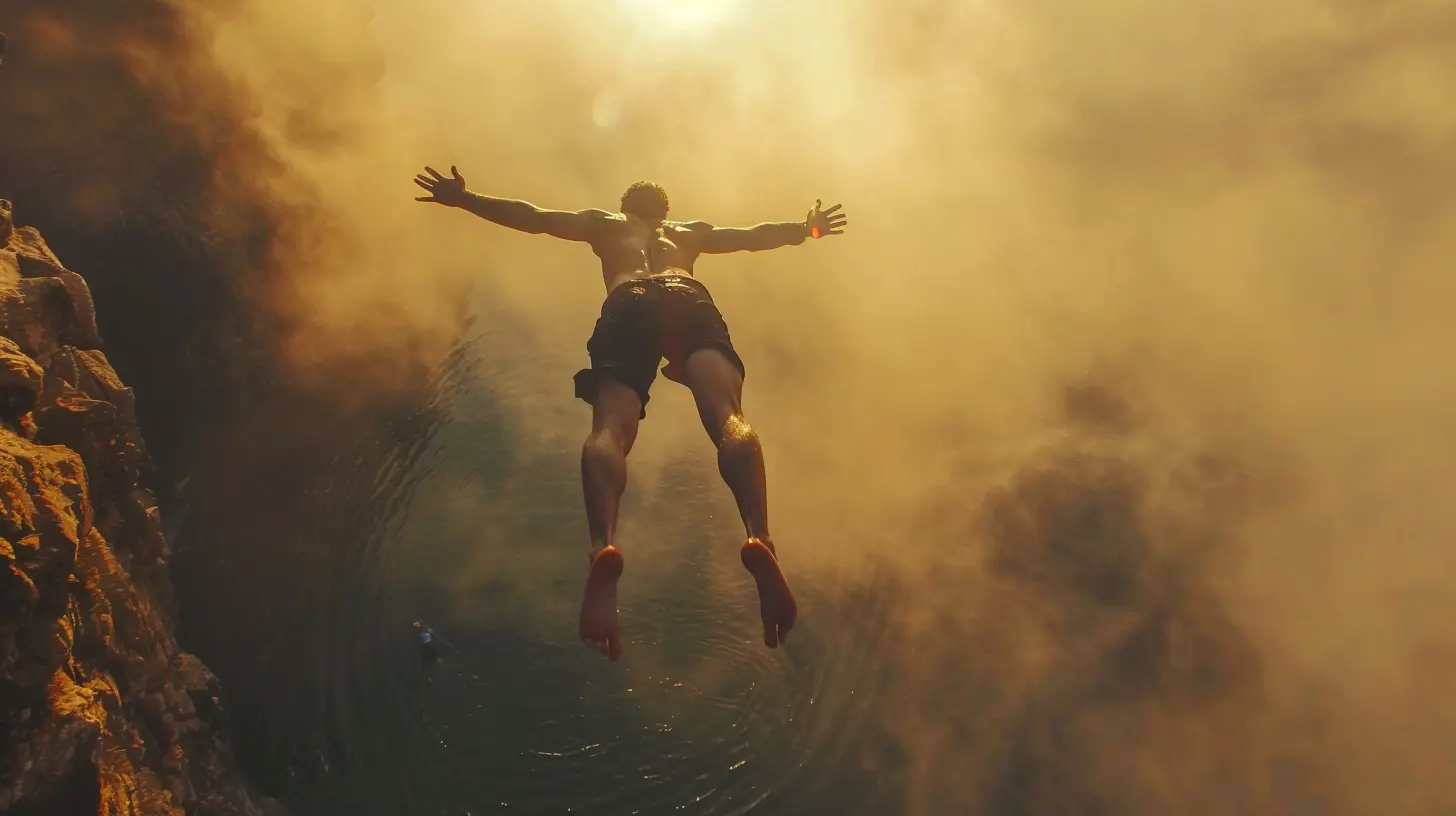The Evolution of Extreme Sports: From Fringe to Mainstream
1 June 2025
Extreme sports—just the phrase alone gets your adrenaline pumping, right? These are the kinds of sports that make you question the sanity of the participants, but also leave you in awe of their bravery and skill. Whether it's jumping out of a plane, riding a massive wave, or flipping a dirt bike in mid-air, extreme sports have always been a spectacle. But how did these once “fringe” activities transform into a mainstream cultural phenomenon? Let's break it down.

The Origins of Extreme Sports
Believe it or not, extreme sports didn't just pop up overnight. Their origins trace back to the early 20th century, though they weren't referred to as "extreme" back then. Take surfing, for example. In Hawaii, people have been riding waves for centuries, long before it became a global sport. Or think about skiing, which began as a necessary mode of transportation in snowy regions of the world.But sports like these weren't seen as "extreme" until enthusiasts started pushing the boundaries of what was possible. It wasn't just about riding waves or skiing down a hill anymore—it became about riding the biggest waves and skiing down the steepest, most dangerous mountains. It was about speed, height, and risk. That's when the "extreme" label started getting tossed around.
1970s and 1980s: The Rise of Subculture
By the 1970s and ’80s, extreme sports began to develop a solid underground following, thanks in large part to the counterculture movements of the time. Skateboarding, BMX biking, and snowboarding were seen as rebellious activities that didn't follow the traditional rules of sport. There were no referees, no uniforms, and certainly no playbooks.Skateboarding really took off in the '70s, especially in places like California where surfers took to the streets when the waves weren't cooperating. The infamous Dogtown crew—skateboarders from Venice Beach—brought a gritty, rebellious attitude to the sport, using empty swimming pools as their playground. It was dangerous, it was thrilling, and it was anything but mainstream.
Snowboarding followed a similar path. Initially, it was banned from most ski resorts because traditional skiers viewed it as too risky and unruly. But that didn’t stop the riders. They carved their own paths, quite literally, down the mountains, and in doing so, they started to push the sport into the public eye.

The Role of Media in Pushing Extreme Sports into the Spotlight
In the 1990s, something big happened that completely changed the landscape for extreme sports: media exposure. ESPN launched the X Games in 1995, and suddenly, the fringe sports of skateboarding, BMX, snowboarding, and motocross were broadcast into living rooms worldwide.The X Games were a game-changer (pun intended). For the first time, extreme athletes had a platform to showcase their talents to a mass audience. And let's be honest, people couldn't look away. Watching someone flip a motorcycle over a 60-foot gap or land a 900-degree spin on a skateboard is just plain exciting. This exposure helped to legitimize extreme sports, giving them a global fanbase and even drawing corporate sponsorships.
But the X Games weren't the only media force pushing extreme sports into the mainstream. Video games like Tony Hawk’s Pro Skater and SSX (the snowboarding game) also played a huge role. These games let people experience the thrill of extreme sports without the risk of a trip to the emergency room. It was all about living vicariously through these virtual athletes, and it made the sports accessible to anyone with a gaming console.

The Athletes Who Became Household Names
What really helped push extreme sports into the mainstream were the athletes themselves. They weren’t just daredevils; they were incredibly skilled professionals who made the impossible look effortless.Tony Hawk: The Skateboarding Icon
You can’t talk about extreme sports without mentioning Tony Hawk. He’s practically synonymous with skateboarding. Hawk became the first person to land a 900 (that's two and a half mid-air rotations) at the X Games in 1999, and that moment is still talked about today. What’s more, he helped make skateboarding cool for a whole new generation of fans, thanks to his video game franchise.Travis Pastrana: The King of Freestyle Motocross
Another name that stands out is Travis Pastrana, a motocross rider who took the sport to jaw-dropping new heights—literally. In 2006, Pastrana performed the first-ever double backflip on a motorcycle, a feat that left fans in disbelief and cemented his status as a legend in the sport.Kelly Slater: The Wave Master
Surfing had its own icon in Kelly Slater, an 11-time World Surf League Champion who has been dominating the sport for decades. Slater not only made surfing look easy, but his skill and charisma helped break surfing into the mainstream, earning it a spot in the Olympics for the first time in 2020.These athletes—and many like them—became household names, proving that extreme sports were no longer just for thrill-seekers on the fringes of society. They were for everyone.

The Influence of Technology on Extreme Sports
Another factor that helped push extreme sports into the mainstream is technology. Thanks to advancements in video equipment like GoPros and drones, extreme athletes can now film their stunts from angles that make viewers feel like they’re right there in the action. Ever watched a wingsuit flyer soar down a mountain from a first-person perspective? It’s heart-stopping, even from the comfort of your couch.Social media has also played a huge role. Platforms like Instagram and YouTube allow athletes to share their craziest tricks and stunts with a global audience instantly. Suddenly, you don’t have to wait for the X Games to see the latest death-defying stunt; you can just scroll through your feed.
Not only has this increased the visibility of extreme sports, but it’s also inspired a new generation of athletes. Kids who grew up watching their heroes on Instagram are now out there trying to land their own tricks, pushing the boundaries even further.
The Mainstreaming of Extreme Sports
Today, extreme sports aren’t just something you watch at the X Games or in a viral YouTube video. They’ve become part of the mainstream sports culture. Snowboarding is an Olympic sport. Skateboarding is set to make its debut in the Summer Olympics. Even rock climbing has found its way onto the Olympic stage.These sports have also crossed over into other realms of entertainment. Movies like Point Break and Lords of Dogtown have glamorized the lifestyle associated with extreme sports. And let's not forget the countless commercials featuring athletes performing wild stunts to sell everything from energy drinks to cars.
But perhaps the most significant sign that extreme sports have gone mainstream is the rise of extreme sports tourism. People are now seeking vacation destinations specifically to engage in activities like bungee jumping, skydiving, or kite surfing. It's no longer enough just to relax by the pool on vacation—people want an adrenaline rush.
The Future of Extreme Sports
So, what's next for extreme sports? Well, as technology continues to evolve, so too will the sports themselves. Virtual reality (VR) might soon allow people to experience the thrill of extreme sports without ever leaving their living room. Imagine being able to "surf" a 50-foot wave or "skydive" from 10,000 feet, all while wearing a VR headset.Then there’s the possibility of new sports emerging. Who could have predicted that something like parkour or freerunning would become popular? The beauty of extreme sports is that they’re constantly evolving. If there’s a way to make an activity faster, higher, or riskier, you can bet someone will figure it out.
Conclusion
Extreme sports have come a long way from their humble, rebellious beginnings. What started as a niche subculture has exploded into a global phenomenon, thanks to a combination of media exposure, technology, and the sheer talent of the athletes involved. It's crazy to think that activities once deemed too risky or rebellious are now featured in the Olympics and have a massive fanbase.And while the mainstreaming of extreme sports has certainly toned down the "fringe" aspect, the core essence remains: it’s all about pushing limits, breaking boundaries, and chasing that next big rush. So, whether you’re a spectator or a participant, one thing’s for sure—extreme sports are here to stay, and they’re only getting wilder from here.
all images in this post were generated using AI tools
Category:
Extreme SportsAuthor:

Uziel Franco
Discussion
rate this article
2 comments
Dorothy Whitley
Extreme sports have transformed the way we embrace challenges and adventure. Let’s celebrate this evolution and continue to push our limits, inspiring each other to soar!
June 16, 2025 at 3:32 AM

Uziel Franco
Thank you for your insightful comment! Indeed, extreme sports have redefined our relationship with adventure, encouraging us all to embrace challenges and inspire one another.
Madison Bennett
This article highlights the fascinating journey of extreme sports from niche activities to mainstream popularity. By showcasing key milestones and cultural shifts, it emphasizes how these sports have gained acceptance and influence, inspiring a new generation of athletes. It's a compelling read for enthusiasts and newcomers alike!
June 15, 2025 at 4:44 AM

Uziel Franco
Thank you for your thoughtful comment! I'm glad you found the article engaging and that it resonated with both enthusiasts and newcomers.


